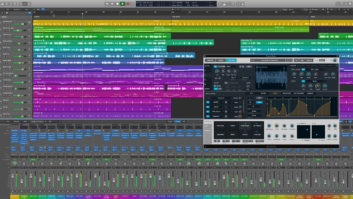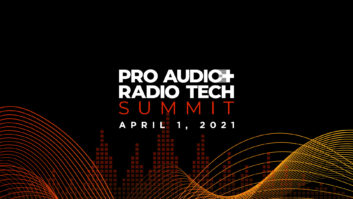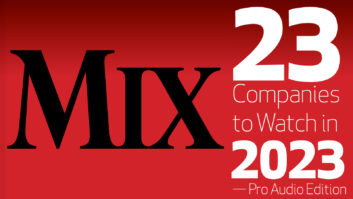Last November, the demise of Cakewalk—a software company that introduced many technological advances over its 30 years in business—caused ripples documented in my January column. But things change fast in the software world.
In late February, BandLab—which combines social media with music-making—acquired Cakewalk’s intellectual property. BandLab is a platform for collaboration, learning music and getting music out into the world; the company decided to release what had been Sonar as a new program, Cakewalk by BandLab, for free (albeit without third-party add-ons that required royalty payments). Clearly, this concept has nothing to do with pro audio—or does it?
Face it, we’re at the mercy of companies that make computers and software. Shudders go through our community when Apple appears to have lost interest in desktop computers, or Microsoft decides that everything really should be stored in the cloud. Pro audio software companies are vulnerable. They aren’t very profitable, have to battle software theft and they depend on someone else’s operating system. Even a stalwart like Pro Tools is part of Avid, whose stock price has been declining steadily since its high in 2005; it’s gone down almost 12 percent in the past year, despite a small bump in 4Q 2017.
I sure hope pro music software isn’t going to go away, but the lessons of Cakewalk, Emagic, Steinberg, Digidesign and Syntrillium are instructive because each presents possibly sustainable economic models for pro audio software.
The “We Need these Guys” model: Yamaha acquired Steinberg after the latter’s failed attempt to go public, thereby filling a hole in its product portfolio. Yamaha became a player in pro music software, and Cubase/Nuendo could complement its keyboards by using them as control surfaces. Furthermore, the robust notation capabilities fit Yamaha’s hold on the educational space.
Similarly, by acquiring Emagic (and hiring some of Opcode’s brain trust), Apple became a player in music software, lending credibility to its pitch that the Mac is the computer for artists and creators. This acquisition also spawned GarageBand. Ultimately Apple standardized on the Core Audio and AU plug-in formats to replace the antiquated pre-OS X options. While music software likely makes money for Yamaha and Apple, it provides value beyond the products themselves.
The “First One’s Free” model: Many users saw releasing Cakewalk software for free as idiotic, but I saw it as smart. BandLab is part of a much larger business entity, and offering Cakewalk for free is probably about marketing as much as it is about profits (and it provides a “next step” for BandLab users to take their music further). But it can also make money once the company offers add-ons to the free core program—the “sell the razor blades, not the razor” concept, which is the model for Microsoft and Apple’s operating systems.
The “Subscribe or Die” model: In return for becoming addicted to the software, you have reasonable assurance that the software will continue to exist because the company will enjoy predictable cash flow from it. A subscription model also means the company will provide some degree of updating and bug fixing to make sure users don’t jump ship. Also note that larger companies (Avid, Adobe) have been most successful with subscriptions, and this alone provides a sense of security.
The “It Makes No Sense Not to Do This” model: When PreSonus introduced Studio One, the company had a growing audio interface business, and bundling software from other companies required a licensing fee. Creating its own software saved the company money, but because the software came with PreSonus interfaces and worked with its mixers, users were exposed to the software and many adopted it. Similarly, Adobe had no audio solution to complement its own video programs and create a suite, so it made sense to buy Syntrillium’s Cool Edit Pro—regardless of whether it sold on its own or not.
What these models have in common is that music software is not significant enough to exist as a major, profitable entity without the backing of a bigger company that has a wider vision. (An exception is Ableton, but that company basically created a market; until very recently, only its software really addressed it. Ableton has also created custom hardware for that market.)
Will music software go away? I certainly hope not. Increasingly, though, it seems that pro audio software not only rides on the coattails of the computer industry, but it needs the corporate equivalent of patronage from the Medici family. Fortunately, the Medicis need audio software.
Author/musician Craig Anderton updates craiganderton.com every Friday with news and tips. His latest album, Simplicity, is now available on Spotify and cdbaby.






